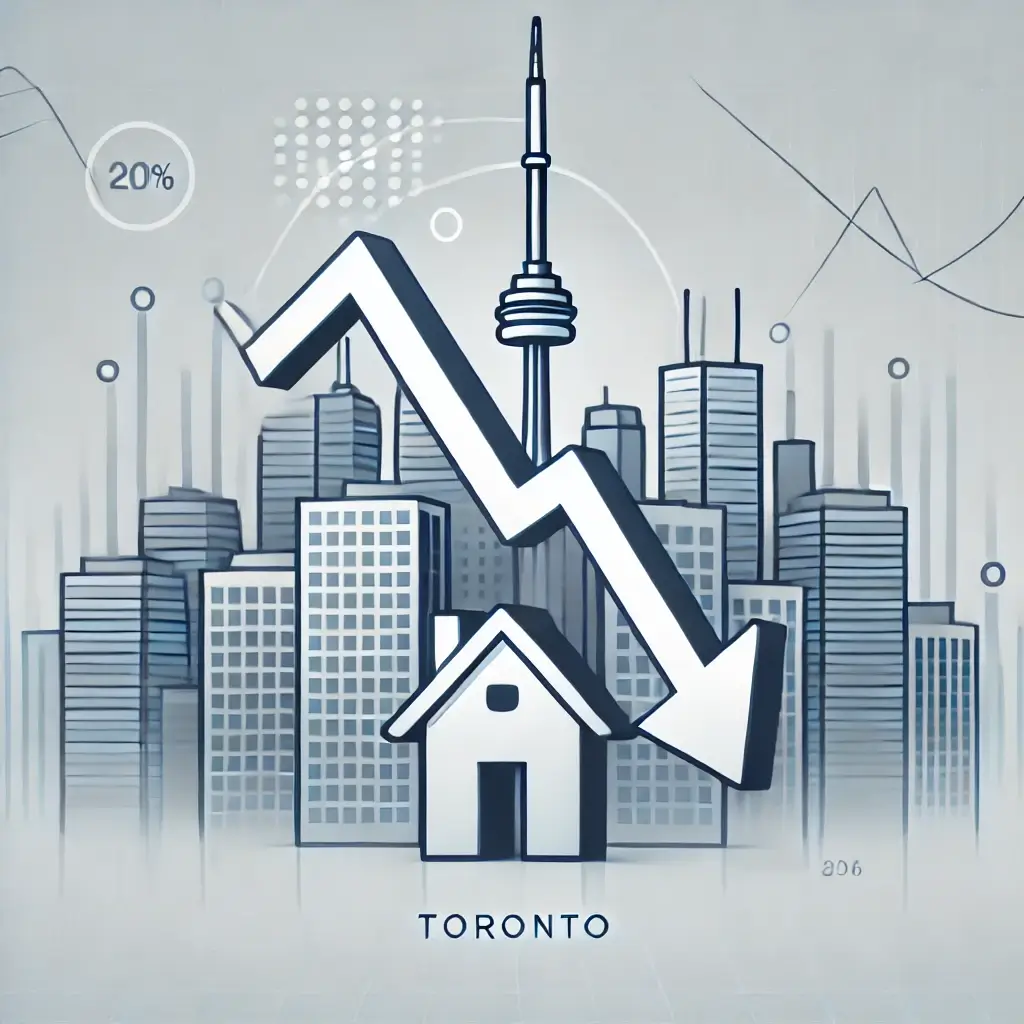Canada’s housing market is witnessing a dramatic resurgence, with home prices recording their most significant increase in 16 months. This unexpected recovery follows a series of interest rate cuts by the Bank of Canada, creating a ripple effect that has reignited demand, driven competition, and reshaped the market landscape. While this growth has breathed new life into the sector, it also brings new challenges and opportunities for buyers, sellers, and investors.
In this blog, we’ll explore the drivers behind this surge, dive into regional trends, and provide actionable insights to help you navigate this evolving market.
What’s Driving the Surge in Home Prices?
1. Declining Interest Rates
After years of elevated borrowing costs aimed at curbing inflation, the Bank of Canada has eased its stance, reducing interest rates significantly:
- Impact on Affordability: Lower rates translate to smaller monthly mortgage payments, encouraging many buyers to enter the market.
- Example: A $500,000 mortgage at 5.5% interest incurs a monthly payment of approximately $3,068. At 4.5%, this drops to $2,803, saving buyers over $3,000 annually.
Case Study:
A family in Ottawa who had postponed their purchase due to high rates jumped back into the market after the rate cuts, successfully buying a four-bedroom home with a reduced monthly payment of $450 compared to rates earlier this year.
2. Pent-Up Demand
The rate hikes of 2022-2023 caused many potential buyers to delay their plans, creating a backlog of demand:
- With rates dropping, these buyers have returned to the market, driving up competition for available homes.
- Insight: This surge in demand has fueled bidding wars in urban and suburban areas alike.
3. Tight Supply
Canada’s ongoing housing supply shortage remains a critical factor:
- Limited Listings: Despite growing demand, new listings have not kept pace, intensifying the competition.
- Result: Sellers are enjoying a significant advantage, with many properties receiving multiple offers and selling above asking prices.
Example:
In Toronto, a semi-detached home listed at $900,000 recently sold for $1.05 million after attracting 20 offers within a week.
4. Immigration and Population Growth
Canada continues to welcome over 500,000 new immigrants annually, with the majority settling in urban centers:
- Impact on Housing: Increased demand for both rentals and homes for sale is driving up prices in key markets like Toronto, Vancouver, and Calgary.
Regional Trends: Where Prices Are Rising the Most
1. Greater Toronto Area (GTA)
The GTA has seen home prices rise by an average of 8% year-over-year, with condos and detached homes leading the charge:
- Hot Spots: Suburban areas like Brampton, Oshawa, and Milton are attracting buyers seeking more affordable options.
- Example: A townhouse in Oshawa appreciated by 15% over the past year, selling for $750,000 in November 2024.
2. Vancouver
Vancouver remains one of the most expensive real estate markets in Canada:
- Detached Homes: Prices average $1.9 million, with limited inventory pushing values higher.
- Condos: Urban condos have seen a resurgence, with prices increasing by 10% year-over-year.
3. Calgary
Calgary has emerged as a top destination for buyers fleeing the high costs of Toronto and Vancouver:
- Affordable Pricing: Detached homes in Calgary average $650,000, making it a popular choice for interprovincial migrants.
- Rental Market Boom: High rental demand is driving investor interest in multi-family properties.
Opportunities and Challenges for Stakeholders
For Buyers
- Be Prepared for Competition:
- Get pre-approved for a mortgage to strengthen your position.
- Set clear budget limits to avoid emotional overspending.
- Focus on Emerging Markets:
- Suburban areas and smaller cities offer better affordability and growth potential.
- Example: In London, Ontario, homes are appreciating steadily, offering a balanced market for buyers.
For Sellers
- Maximize Your Home’s Appeal:
- Invest in minor upgrades like landscaping, painting, or staging to attract competitive offers.
- Case Study: A Mississauga homeowner spent $5,000 on renovations and sold their home for $50,000 above asking price.
- Leverage High Demand:
- With inventory tight, sellers can set competitive asking prices and negotiate favorable terms.
For Investors
- Target Rental Properties:
- Rising rental demand presents an excellent opportunity for stable cash flow and long-term appreciation.
- Example: An investor in Calgary purchased a triplex generating $7,500/month in rental income, covering their mortgage entirely.
- Consider Preconstruction Investments:
- Locking in today’s prices for properties that will be ready in a few years can yield significant returns.
- Hot Spots: Transit-oriented developments in Scarborough and Vaughan are gaining traction.
Broader Implications of the Price Surge
1. Affordability Concerns
Despite falling interest rates, rising home prices continue to push affordability out of reach for many:
- First-Time Buyers: Younger Canadians are finding it increasingly difficult to save for a down payment.
- Advice: Explore government programs like the First-Time Home Buyer Incentive to ease financial burdens.
2. Economic Uncertainty
While the rate cuts have bolstered the market, potential risks remain:
- Inflationary pressures and global economic shifts could impact future interest rate policies.
- Tip: Monitor economic indicators and work with financial advisors to plan for potential rate changes.
Future Outlook
1. Sustained Growth
Canada’s housing market is expected to maintain its upward trajectory in 2025, supported by:
- Continued population growth.
- Increasing investor interest in rental properties.
2. Focus on Sustainability
Green housing initiatives and energy-efficient homes are gaining popularity, with buyers willing to pay premiums for environmentally friendly features.
3. Expansion of Suburban Markets
As urban affordability challenges persist, suburbs and smaller cities will continue to attract buyers seeking value.
Final Thoughts
Canada’s recent home price surge showcases the strength and adaptability of the housing market, driven by key factors like falling interest rates and persistent demand. For anyone navigating this dynamic landscape—whether as a buyer, seller, or investor—staying informed and prepared is crucial.
If you’re considering buying a home or investing, use our Mortgage Calculator to explore your options and determine what’s financially feasible for you. This tool helps you assess monthly payments, interest rates, and affordability, giving you the confidence to make smarter decisions.
At Taya Real Estate, we specialize in turning market insights into actionable advice. Whether you’re ready to take the next step in the Canadian housing market or just starting to explore your options, contact us today. Our team is here to provide expert guidance and personalized support every step of the way.








